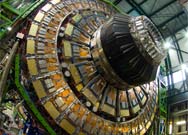 Academic Jon Taplin highlights this WSJ piece on quantum entanglement and the theories of French physicist Bernard d’Espagnat:
Academic Jon Taplin highlights this WSJ piece on quantum entanglement and the theories of French physicist Bernard d’Espagnat:
In March, the 87-year-old Frenchman won the prestigious $1.5 million Templeton Prize for years of work affirming “life’s spiritual dimension.”
Based on quantum behavior, Dr. d’Espagnat’s big idea is that science can only probe so far into what is real, and there’s a “veiled reality” that will always elude us.
Many scientists disagree. While Dr. d’Espagnat concedes that he can’t prove his theory, he argues that it’s about the notion of mystery. “The emotions you get from listening to Mozart,” he says, “are like the faint glimpses of ultimate reality we get” from quantum experiments. “I claim nothing more.”
I am not familiar with Prof. d’Espagnat’s work. Is he talking about the God of the gaps or the Popperian problem of induction?
 Worth a spin; has considerable charm.
Worth a spin; has considerable charm. A week without
A week without  In addition to searching
In addition to searching 